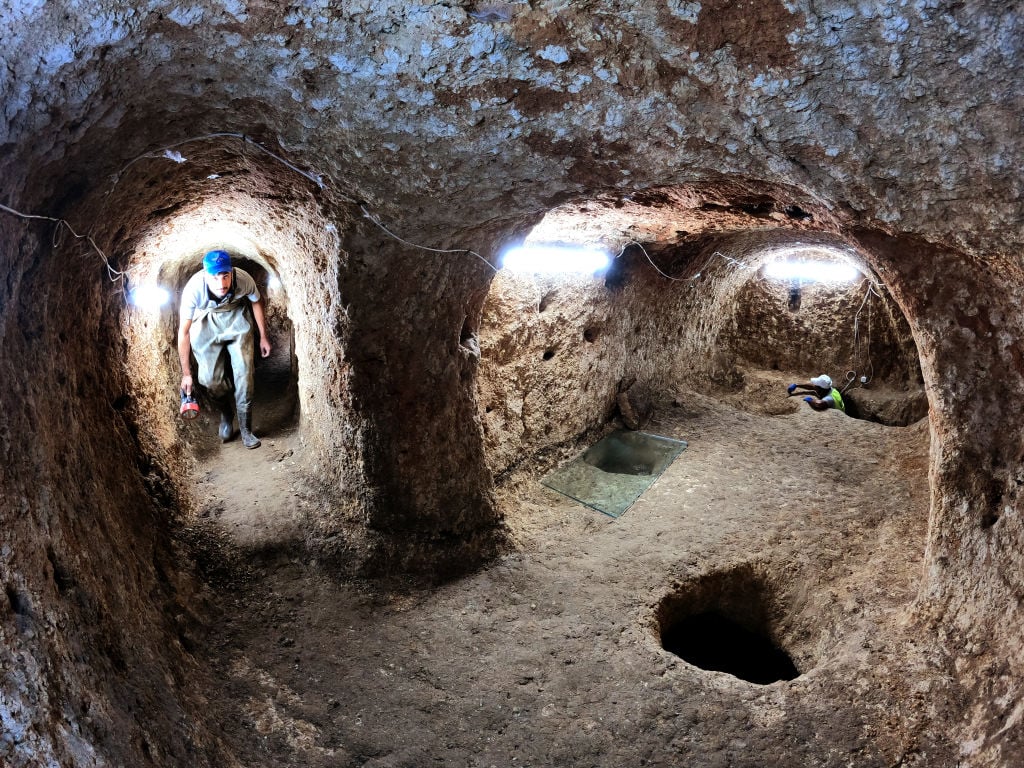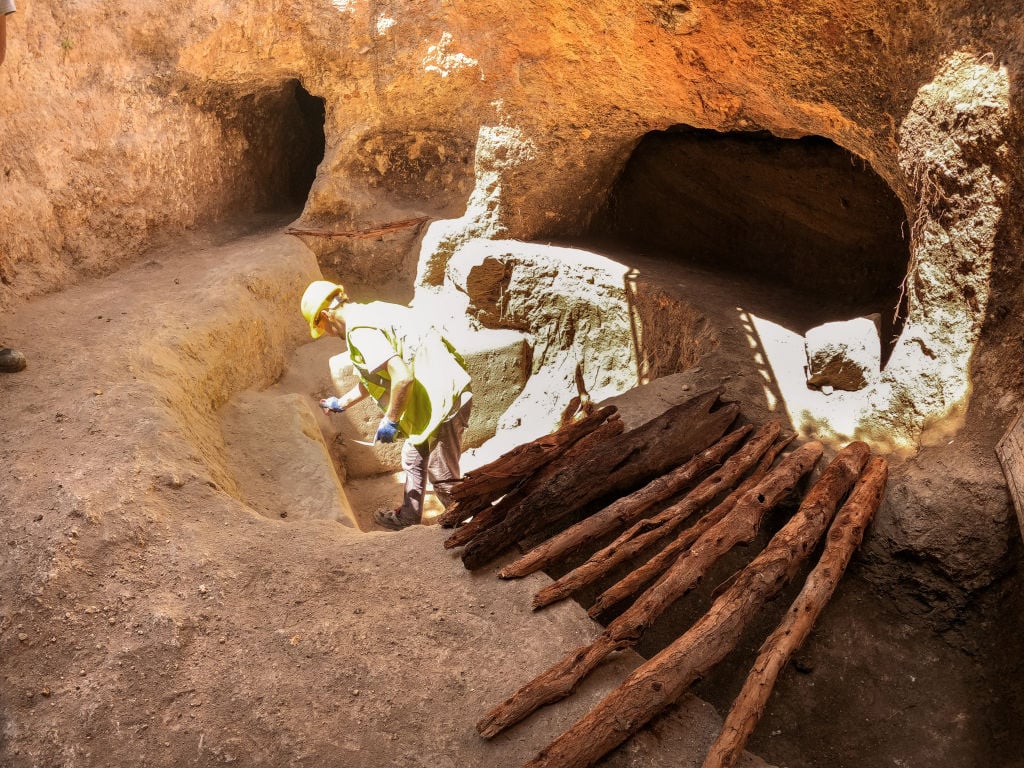Archaeology & History
Turkish Archaeologists Have Uncovered a Long-Rumored Subterranean City Used as a Sanctuary During the Roman Empire
The vast subterranean complex was kitted out with stoves, lamps, wells, and ventilation systems.

The vast subterranean complex was kitted out with stoves, lamps, wells, and ventilation systems.

Jo Lawson-Tancred

Turkey has long been known for its labyrinth of underground cities, and archaeologists now believe that they may have discovered the largest one yet. Sarayini, which is thought to date back to the 8th century, was once used as a shelter by local Christians who were persecuted by the Roman empire and local Muslim leaders and needed to protect themselves from raids.
The 215,000-square-foot ancient city was a highly complex structure. So far, researchers have unearthed 30 chambers that would have been used as living spaces and were furnished with many of the amenities we might still expect today. These include stoves, chimneys, storage areas, stands for lamps, cellars, ventilation systems, and water wells.
One room was found to contain a column drum, one of the sections that make up a column, that has been positioned in the style of a tombstone. This area is still being explored.
“We observed that due to the inns’ expansive, comfortable, interconnected, and high-quality architectural design, it resembles a palace, leading us to the conclusion that it’s called Sarayini for this reason,” Hasan Uğuz, an archaeologist who directed the excavation, told Anadolu Agency. Sarayini means palace in Turkish.

‘Sarayini’, an ancient multi-level underground city dates back to the 8th century in Sarayonu district of Konya, Turkey. Photo by Serhat Cetinkaya/Anadolu Agency via Getty Images.
“Among our discoveries this year, we have a very wide corridor, which can be likened to a main street,” he added. “On the sides of this corridor, there are numerous galleries. There are tunnels and corridors connecting these galleries.” He has also said that due to the small size of the galleries it is likely that the inhabitants were undernourished and consequently did not need much space.
The vast subterranean network of connecting rooms likely extends even further than what has so far been unearthed, so Uğuz’s is hoping that there will be more waiting to be uncovered. Though it is new to archaeologists, the site’s mammoth size had long been the subject of rumors in the region. “During surface surveys, local elders mentioned that they had explored this place as children and described it as a very large underground city” explained Uğuz. “This year, we realized that half of what they described turned out to be true.”
There are many more underground cities of varying size in the nearby area, but it is not yet known what connection they may have to Sarayini. Another large underground city known as Elengubu, or Derinkuyu, lies in the region of Cappadocia. Sitting nearly 300 feet below the surface it was able to accommodate up to 20,00 inhabitants. After its official discovery in 1963, it became a tourist magnet and was made a UNESCO World Heritage Site in 1985.
The excavation work on Sarayini is being carried out thanks to a partnership between Turkey’s Ministry of Culture and Tourism and the local Sarayönü Municipality, in the district of Konya. It has been ongoing for the past two years.
More Trending Stories: